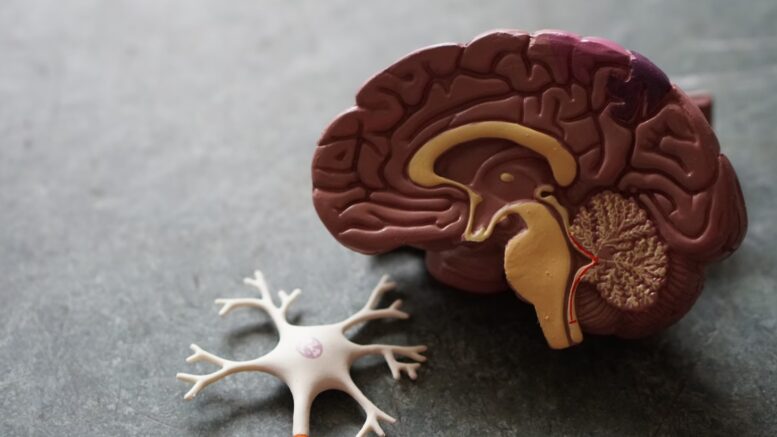Canavan Disease is a rare, inherited neurological disorder that typically appears during infancy. It causes an enzyme deficiency in the brain leading to various progressive neurological and physical ailments. There currently is no cure for Canavan Disease, however, research is being conducted in the scientific community to combat the disease and improve the lives of those who are diagnosed with it. Today we sat down with Myrtelle, a leading gene therapy biotech company committed to creating a brighter future for those with Canavan disease.
Introducing Myrtelle
Myrtelle is a gene therapy biotech company whose mission is to transform the treatment of neurological diseases. Utilizing their unique and innovative core technologies and expertise, they are building a cutting-edge gene therapy platform aimed at addressing an array of diseases in which myelin, the insulating material of the brain and spinal cord that protects nerve fibers and enables normal transmission of nerve signals, is affected. Myrtelle’s lead program is in Canavan Disease, a rare degenerative neurological disease first identified in 1931 by, and named after, Dr. Myrtelle Canavan, one of the first female neuropathologists.
Myrtelle is committed to revolutionizing the way the scientific-medical community approaches white matter disorders. The company is encouraged by early results from its clinical trial in Canavan disease and is positioned to be a leader in targeting diseases such as Canavan involving oligodendrocytes and myelin production.
Myrtelle Gene Therapy: Innovative Research
Gene therapy research is a complex process that requires the collaboration of highly skilled and experienced professionals across a range of disciplines. It is not an overnight process, but rather a methodical, detail-oriented journey that involves careful planning, data analysis, and cutting-edge biotechnology. Myrtelle is a leader in the field of gene therapy and is building a body of scientific work that can be studied and implemented toward unique solutions for white matter disease.
A cornerstone of Myrtelle’s research has been advancing its proprietary technologies to better understand and optimize the delivery of genes to myelin-generating cells. This enables innovative approaches to address the needs of hundreds of disorders involving myelin. So how does this all work?

Myrtelle Clinical Trial: rAAV-Olig001-ASPA Gene Therapy
In its Canavan disease gene therapy efforts, Myrtelle utilizes a proprietary vector, known as rAAV-Olig001, rAAV-Olig001 is based on a non-pathogenic type of virus called adeno-associated virus (AAV). This virus can carry a payload, such as a corrective gene, into the human cells in need, where it is expressed and exerts its therapeutic effect. In the Canavan disease program, the rAAV-Olig001 is delivered directly into the cerebrospinal fluid, the fluid that surrounds the brain and spinal cord. This allows the gene therapy to flow in and around the brain and directly delivers the ASPA gene to oligodendrocyte cells, which are the cells responsible for the production of myelin, and thus enable oligodendrocytes to produce the enzyme aspartoacylase (ASPA), the enzyme required for the breakdown of N-Acetylaspartate (NAA) into acetate and aspartate, thereby lowering NAA levels, restoring acetate and aspartate and combating Canavan disease.
Clinical trials, such as Myrtelle’s Canavan trial using rAAV-Olig001-ASPA, are making waves in the CNS gene therapy space, giving scientists valuable insights and a look toward a brighter future. The trials have provided gene therapy experts with a better understanding of how this potential treatment works and what effects it may have on the brain. This information is helping to create a potential future landscape for white matter gene therapy, by providing scientists with a new treatment approach.
Myrtelle: Taking The Fight To Canavan Disease
Currently, there is no cure for Canavan disease. However, this does not mean the scientific research community isn’t striving to improve the quality of life of those living with Canavan disease. Here are a few of the key actions Myrtelle has undertaken to not only improve the lives of those affected but also potentially one day find a cure:
Utilizing Proprietary Technology
- Optimize the delivery of genes to myelin-generating oligodendrocyte cells.
- Advancing innovative approaches to address the needs of hundreds of disorders involving myelin.
- Prosecuting global patent families across a range of areas, including unique vector and gene sequences.
- Testing new routes of administration and methods of use in clinical trials.
Spreading Awareness
- Disseminating informative articles that tackle questions surrounding Myrtelle’s treatment approach.
- Issuing press releases and posting on social media to inform and educate the Canavan community and physicians on the trial including the manufacturing and regulatory process and updates on treated patients.
Myrtelle is dedicated to educating the world about Canavan disease, finding solutions for Canavan disease, and being an innovative leader in the gene therapy space. Myrtelle has been driving its efforts in the fight against this devastating disease and is excited to help create a better future for all those affected.
For more information and how you can get involved, visit Myrtelle’s website for the most up-to-date news surrounding the disease.
